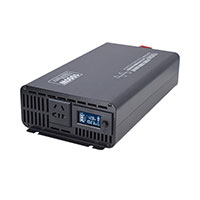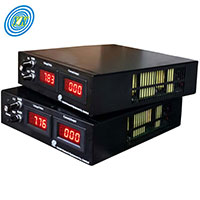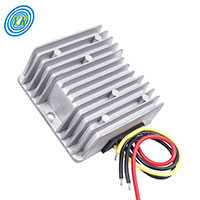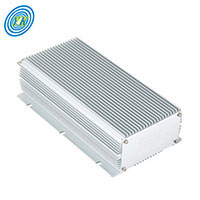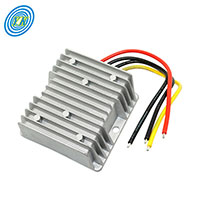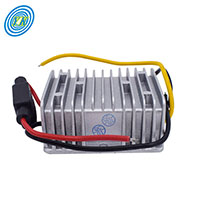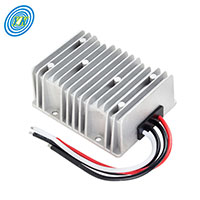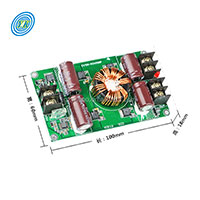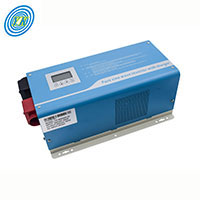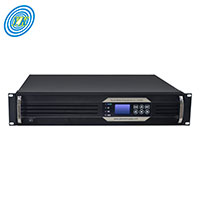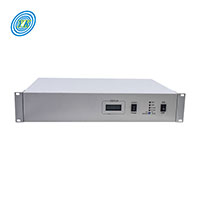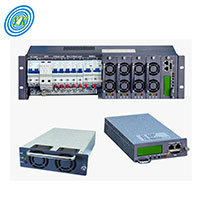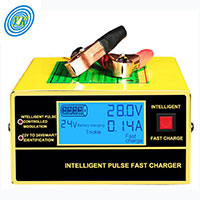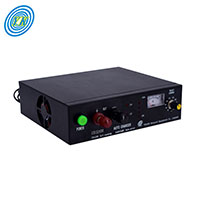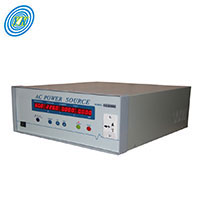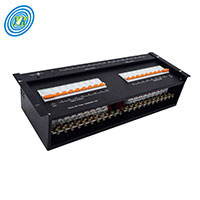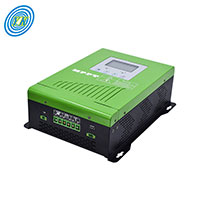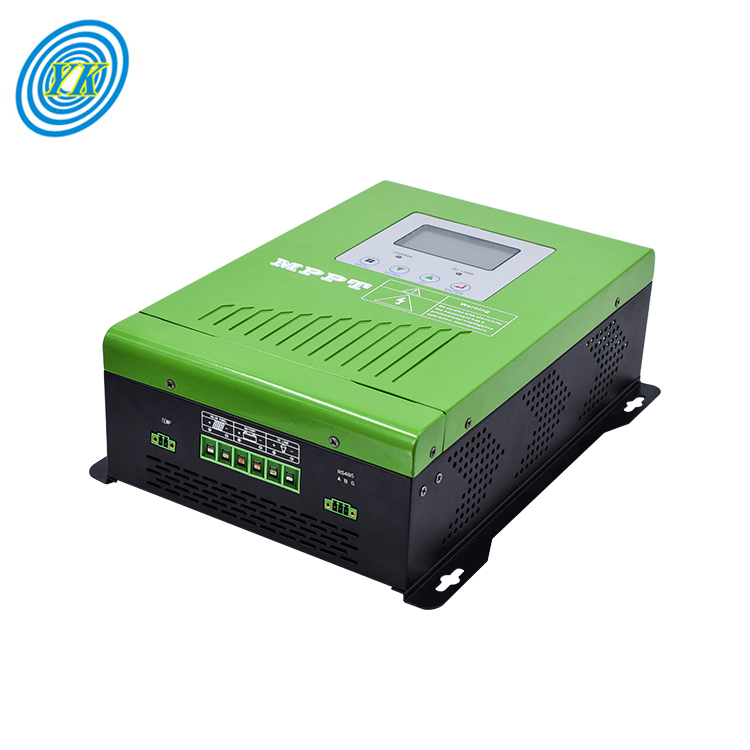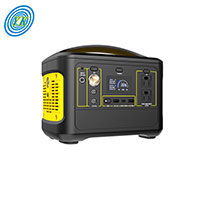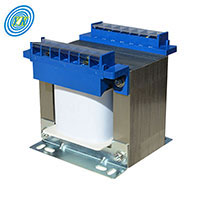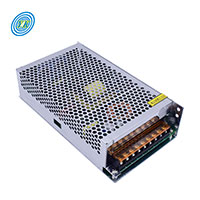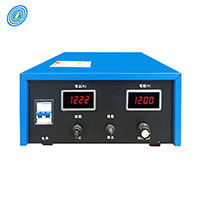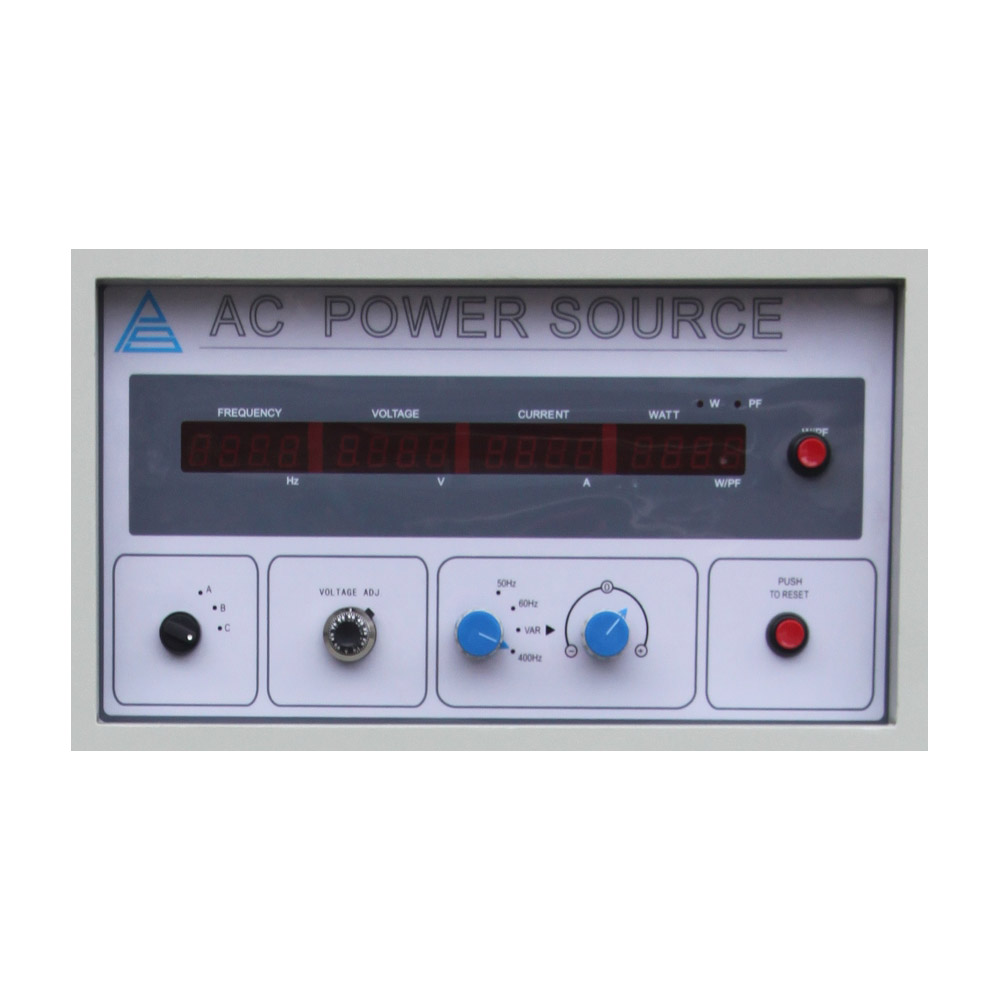
Understanding the Impact of Frequency Inverters on Power Quality
Click: 851 Date: 09/14/2023 3::47::41 PM
Understanding the Impact of Frequency Inverters on Power QualityPower quality is a critical factor in ensuring the reliability and stability of electrical systems. Frequency inverters, also known as variable frequency drives (VFDs), play a significant role in controlling the speed and torque of electric motors. However, their operation can have an impact on power quality. This article aims to provide an understanding of the impact of frequency inverters on power quality, including the causes of power quality issues and potential mitigation strategies.Power Quality ConcernsPower quality refers to the characteristics of the electrical supply, such as voltage and frequency, under typical operational conditions. Power electronics devices, including frequency inverters, can introduce disturbances that affect the quality of the power supplied to connected equipment. Some key concerns regarding power quality include:Non-linear loads and single-phase loads can negatively impact power quality.The increase in sensitive (critical) loads and new operational procedures can affect power quality.The high penetration of distributed energy resources (DERs), such as solar PV systems connected to the grid using inverters, introduces new challenges to power quality.Impact of Frequency Inverters on Power QualityFrequency inverters can introduce harmonic voltages and currents, leading to power quality issues at the point of connection (POC). Harmonics are multiples of the fundamental frequency and can cause energy losses, reduce system capacity, and affect network components and protection equipment. Some key impacts of frequency inverters on power quality include:Harmonic distortion: Frequency inverters can generate harmonics that distort the voltage and current waveforms, leading to increased total harmonic distortion (THD). High THD can cause overheating of equipment, interference with communication systems, and reduced power factor.Voltage fluctuations: Frequency inverters can cause voltage fluctuations due to their switching operation. Rapid changes in voltage can impact sensitive equipment, such as computers and electronic devices.Power factor correction: Frequency inverters can improve power factor by adjusting the phase relationship between voltage and current. A low power factor can result in increased energy consumption and additional stress on the electrical system.Mitigation StrategiesTo mitigate the impact of frequency inverters on power quality, various strategies can be employed. These include:Harmonic filters: Installing harmonic filters in the electrical system can reduce harmonic distortion caused by frequency inverters. Harmonic filters are designed to absorb or redirect harmonic currents, improving power quality.Active power filters: Active power filters are advanced devices that can compensate for harmonic currents and reactive power. They actively inject currents to cancel out the harmonic currents generated by frequency inverters, thereby improving power quality.Proper grounding and shielding: Ensuring proper grounding and shielding of electrical systems can minimize electromagnetic interference and mitigate the impact of frequency inverters on nearby sensitive equipment.Compliance with standards: Following relevant standards and guidelines for power quality, such as IEEE 519, can help ensure that frequency inverters meet acceptable limits for harmonic distortion and other power quality parameters.ConclusionFrequency inverters are valuable devices for controlling the speed and torque of electric motors. However, their operation can introduce power quality issues such as harmonic distortion and voltage fluctuations. By implementing appropriate mitigation strategies, such as harmonic filters and active power filters, the impact of frequency inverters on power quality can be minimized. It is crucial to consider power quality concerns when designing and implementing systems that utilize frequency inverters.
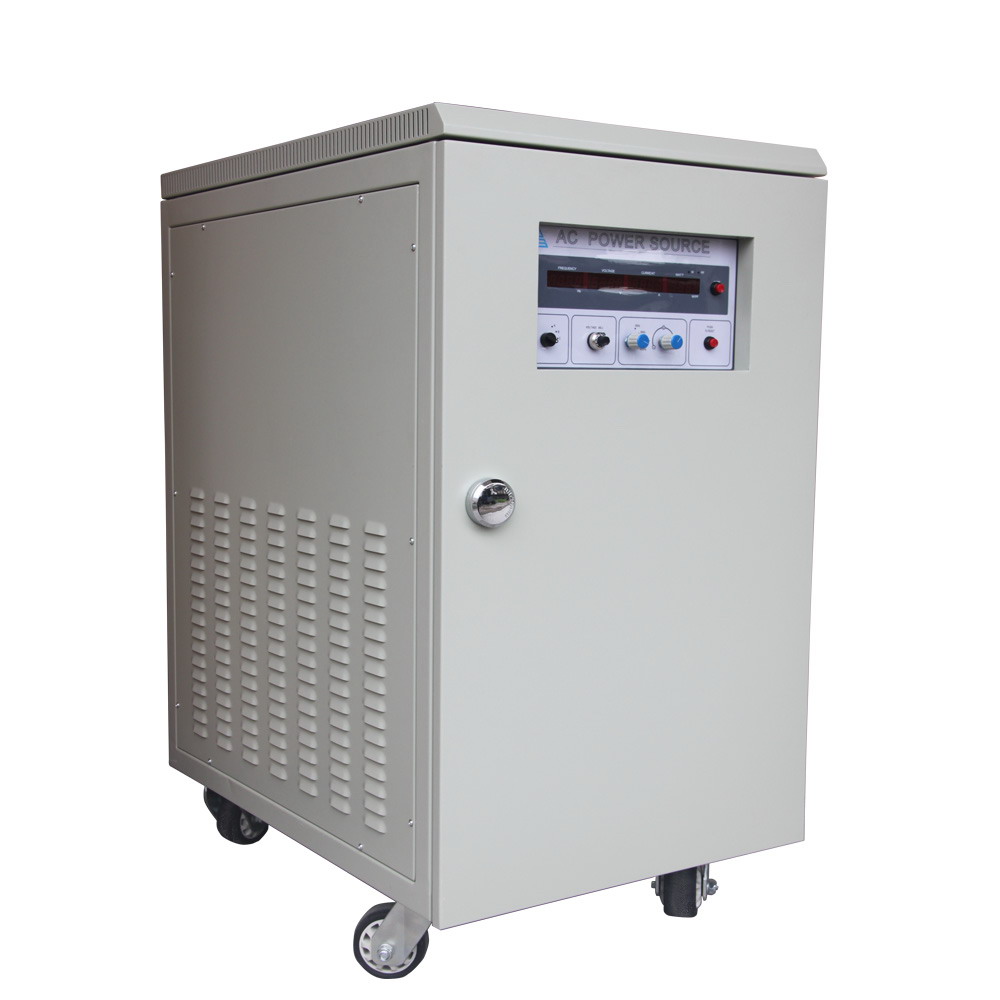
The Future of Variable Frequency Drives in the Era of Smart Grids
Click: 1751 Date: 09/14/2023 3::32::11 PM
The Future of Variable Frequency Drives in the Era of Smart GridsThe era of smart grids is upon us, and with it comes the need for more efficient and reliable power systems. Variable Frequency Drives (VFDs) play a crucial role in enabling the transition to smart grid systems by providing advanced control and optimization features. This article discusses the future of VFDs in the context of smart grids, exploring their potential applications, challenges, and opportunities for growth.Applications of VFDs in Smart GridsSmart grid systems aim to improve the efficiency, reliability, and sustainability of power distribution networks. VFDs can be integrated into various components of smart grid systems to optimize their performance and manage power flow more effectively .Frequency Stability and Control: VFDs can be used to maintain system frequency stability by reacting to changes in load and generation. They can help restore system frequency in the event of deviations, ensuring that the grid operates smoothly and efficiently.Distributed Generation: With the increasing penetration of renewable energy sources and distributed generation, VFDs can be used to manage and optimize the output of these generation units, ensuring that the grid remains stable and resilient .Energy Storage: VFDs can be integrated into energy storage systems, allowing for better control of energy storage and discharge processes, ultimately improving the overall performance of the smart grid.Smart Loads: VFDs can be used to manage the operation of smart loads, such as electric vehicles and industrial equipment, ensuring that they contribute optimally to the grid's stability and efficiency.Challenges and OpportunitiesThe integration of VFDs into smart grid systems presents both challenges and opportunities. Some of the key challenges include:Technological Transition: As VFDs become more prevalent in smart grid systems, there is a need for a technological transition, including the development of new communication and control technologies to support the advanced features of VFDs.Integration with Renewable Energy Sources: As renewable energy sources become more prevalent, VFDs need to be integrated seamlessly with these sources to ensure efficient and reliable operation of the grid.Grid Resilience: VFDs can help improve grid resilience by enabling better control of power flow and frequency stability, but they also need to be robust and reliable to ensure that they can respond effectively in the event of grid disturbances.In response to these challenges, there are several opportunities for growth and innovation in the VFD market:Advanced Control Algorithms: Developing advanced control algorithms that can optimize the performance of VFDs in various applications, such as frequency control, load management, and energy storage management, will be crucial for their widespread adoption in smart grid systems.
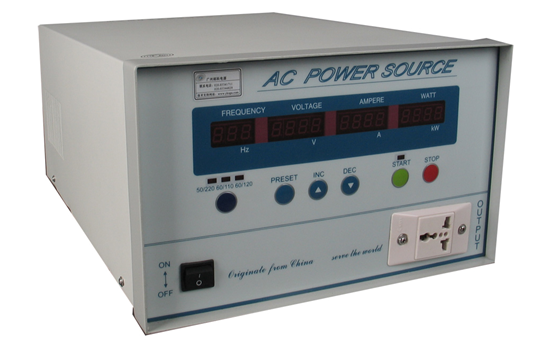
Frequency Inverters in Robotic Automation: A Game Changer
Click: 1801 Date: 09/14/2023 3::08::39 PM
Frequency Inverters in Robotic Automation: A Game ChangerRobotic automation has revolutionized various industries, and the integration of frequency inverters has played a pivotal role in enhancing the performance and capabilities of robotic systems. This article provides an overview of the significant impact of frequency inverters in robotic automation, highlighting their transformative role in improving efficiency, precision, and adaptability. By analyzing the existing literature, we explore the various applications of frequency inverters in robotic automation and discuss the potential research avenues and multidisciplinary collaborations in this field.1. IntroductionRobotic automation has witnessed significant advancements in recent years, enabling the automation of complex tasks and enhancing productivity in industries such as manufacturing, healthcare, agriculture, and logistics. One key component that has contributed to the success of robotic automation is the integration of frequency inverters. Frequency inverters, also known as variable frequency drives (VFDs), are electronic devices that control the speed and torque of electric motors by varying the frequency and voltage of the power supplied to the motor.The use of frequency inverters in robotic automation has been a game changer, enabling precise control of motor speed, acceleration, and deceleration. This level of control allows robots to perform tasks with high accuracy, efficiency, and adaptability. By adjusting the frequency and voltage, frequency inverters enable robots to operate at optimal speeds for different tasks, resulting in energy savings and improved performance.2. Implementation of Frequency Inverters in Robotic AutomationThe implementation of frequency inverters in robotic automation involves several key aspects that contribute to their effectiveness and transformative impact:Speed Control and Precision: Frequency inverters enable precise control of motor speed, allowing robots to perform tasks at varying speeds based on requirements. This level of control enhances the precision and accuracy of robotic movements, resulting in improved quality and efficiency.Energy Efficiency: Frequency inverters play a crucial role in optimizing energy consumption in robotic systems. By adjusting the frequency and voltage based on the task requirements, frequency inverters ensure that motors operate at optimal efficiency levels, reducing energy wastage and overall power consumption.Dynamic Response and Adaptability: Frequency inverters facilitate rapid changes in motor speed and torque, enabling robots to quickly adapt to changing task conditions and requirements. This dynamic response capability enhances the versatility and adaptability of robotic systems, allowing them to handle a wide range of tasks with efficiency and precision.Motor Protection and Safety: Frequency inverters include built-in protection mechanisms that safeguard motors from damage due to overvoltage, overcurrent, or overheating. These protective features ensure the longevity and reliability of robotic systems, minimizing downtime and maintenance costs.3. Applications of Frequency Inverters in Robotic AutomationThe integration of frequency inverters has found diverse applications in robotic automation across various industries. Some notable examples include:Manufacturing and Assembly: Frequency inverters enable precise control of robotic arm movements, allowing for efficient assembly line operations and high-quality product manufacturing.Material Handling and Logistics: Robotic systems equipped with frequency inverters can adapt their speed and torque based on the weight and type of materials being handled, facilitating efficient and safe material transportation and logistics operations.Healthcare and Medical Robotics: Frequency inverters play a crucial role in surgical robotics, enabling precise control of robotic movements during minimally invasive procedures. This precision enhances surgical outcomes and patient safety.Agriculture and Farming: Robotic automation in agriculture utilizes frequency inverters to control the speed and torque of robotic arms and vehicles, facilitating tasks such as planting, harvesting, and crop maintenance.Warehouse and Distribution: Frequency inverters enable efficient material sorting, stacking, and retrieval in warehouse and distribution centers, enhancing productivity and reducing labor requirements.4. Future Directions and CollaborationThe integration of frequency inverters in robotic automation has already demonstrated significant benefits and has opened up numerous research avenues and opportunities for collaboration. Some potential future directions include:Advanced Control Algorithms: Developing advanced control algorithms that optimize the performance and energy efficiency of robotic systems by leveraging the capabilities of frequency inverters.Human-Robot Collaboration: Exploring ways to enhance human-robot collaboration by utilizing frequency inverters to enable robots to adjust their movements and speed based on human input and interaction.Multi-Robot Systems: Investigating the use of frequency inverters in multi-robot systems to improve coordination, synchronization, and task allocation among robots.Safety and Fault Tolerance: Enhancing the safety and fault tolerance of robotic systems by integrating advanced fault detection and protection mechanisms into frequency inverters.In conclusion, the integration of frequency inverters in robotic automation has been a game changer, enabling precise control, energy efficiency, adaptability, and safety in robotic systems. The diverse applications of frequency inverters across industries highlight their transformative impact.
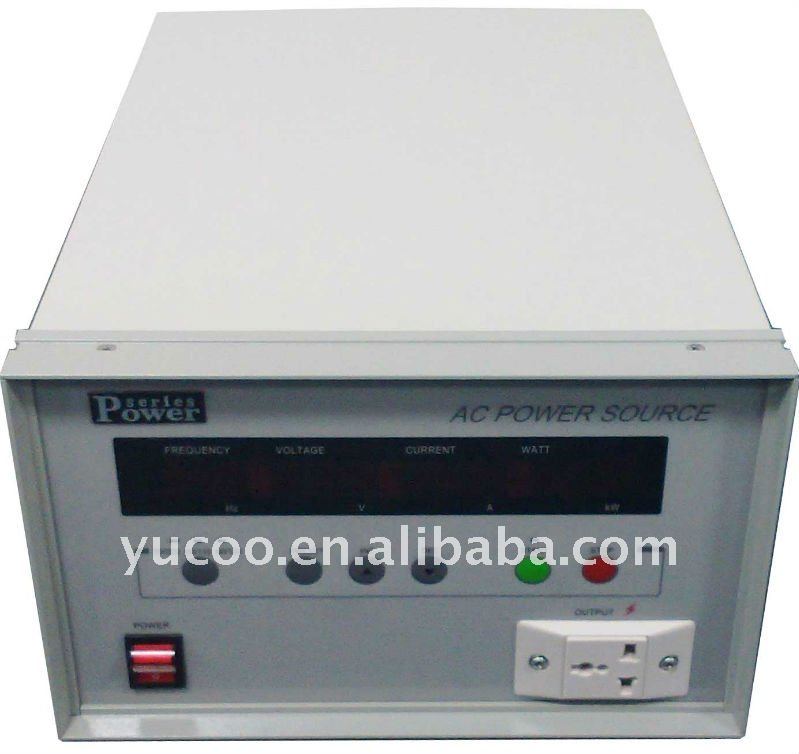
The Role of Frequency Inverters in Modern Water and Wastewater Treatment
Click: 2011 Date: 09/14/2023 1::55::24 PM
The Role of Frequency Inverters in Modern Water and Wastewater TreatmentWater and wastewater treatment is a critical process that ensures the availability of clean water for various purposes and protects the environment from pollution. In recent years, frequency inverters have emerged as essential components in modern water and wastewater treatment systems, playing a significant role in improving efficiency, reducing energy consumption, and enhancing overall performance.Introduction to Frequency InvertersFrequency inverters, also known as variable frequency drives (VFDs), are electronic devices that control the speed and torque of electric motors by varying the frequency and voltage of the power supplied to them. By adjusting the motor speed to match the required load, frequency inverters enable precise control over the operation of water and wastewater treatment equipment, such as pumps, blowers, and mixers.Energy Efficiency and Cost SavingsOne of the key advantages of using frequency inverters in water and wastewater treatment is the potential for significant energy savings. Traditional fixed-speed motors operate at a constant speed regardless of the load requirements, leading to excessive energy consumption. In contrast, frequency inverters allow motors to operate at variable speeds, matching the actual demand and reducing the energy wasted during low-load conditions.By adjusting motor speed to match the required flow rate or pressure, frequency inverters can optimize the performance of pumps and other equipment, resulting in substantial energy cost savings. Studies have shown that the use of frequency inverters in water and wastewater treatment processes can lead to energy savings ranging from 20% to 50%.Process Control and Performance OptimizationFrequency inverters offer precise control over motor speed, allowing operators to fine-tune the performance of water and wastewater treatment processes. By adjusting the speed of pumps and blowers, operators can optimize flow rates, pressure levels, and aeration rates to meet specific treatment requirements.The ability to control motor speed also enables the implementation of advanced control strategies, such as feedback control loops and cascade control, to maintain stable and efficient operation of the treatment systems. For example, in wastewater treatment, frequency inverters can be used to control the dissolved oxygen levels in activated sludge processes, improving the removal efficiency of pollutants and reducing the risk of process upsets.Maintenance and Equipment ProtectionFrequency inverters offer several features that contribute to the maintenance and protection of water and wastewater treatment equipment. Soft starting and stopping capabilities reduce mechanical stress on pumps and other rotating equipment, extending their lifespan and reducing the need for costly repairs or replacements.Furthermore, frequency inverters provide built-in protection mechanisms, such as motor overload detection and voltage surge suppression, that safeguard the equipment from damage caused by electrical and operational issues. By preventing motor failures and system downtime, frequency inverters contribute to the overall reliability and availability of water and wastewater treatment processes.ConclusionIn conclusion, frequency inverters play a crucial role in modern water and wastewater treatment by enhancing energy efficiency, enabling precise process control, and protecting equipment. The use of frequency inverters can lead to significant energy savings, improve treatment performance, and reduce maintenance costs. As the demand for sustainable and efficient water management continues to grow, the integration of frequency inverters in water and wastewater treatment systems is expected to become even more prevalent.
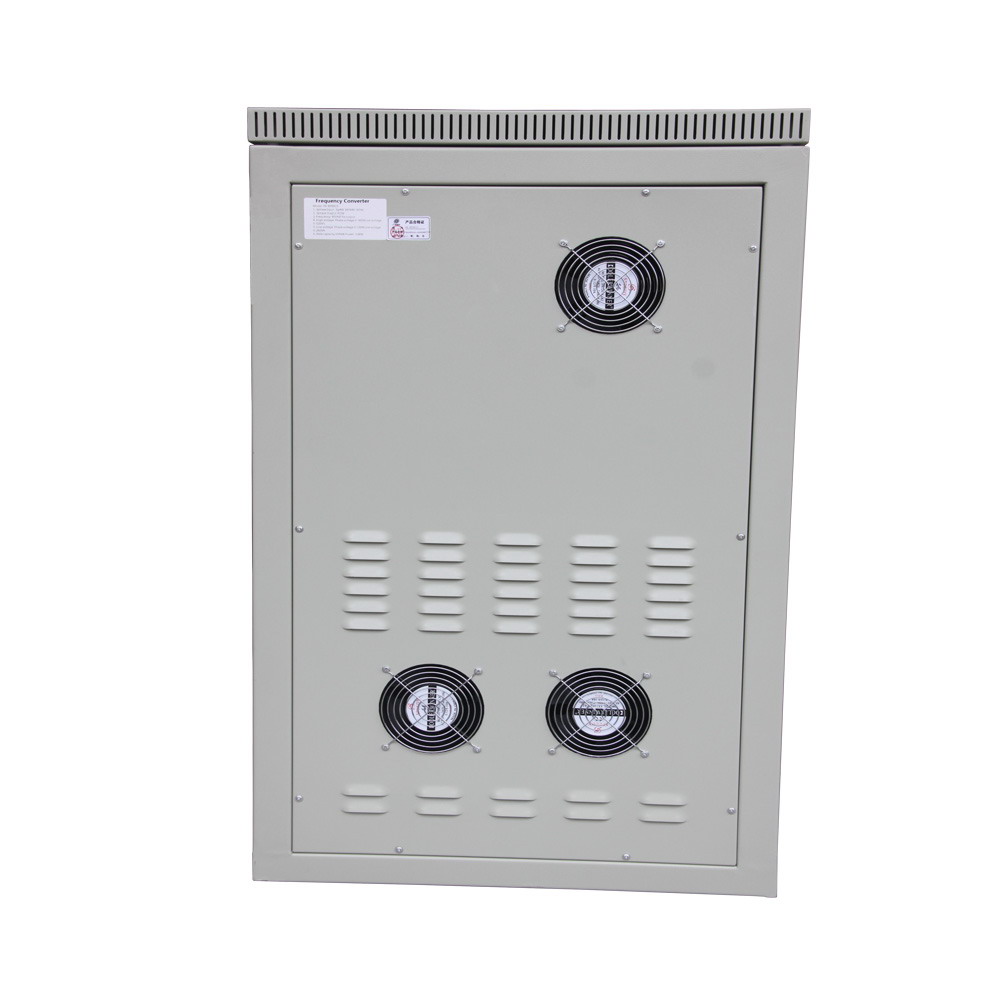
Advances in Variable Frequency Drive Technology for Agricultural Applications
Click: 1911 Date: 09/14/2023 11::50::44 AM
Advances in Variable Frequency Drive Technology for Agricultural ApplicationsVariable Frequency Drive (VFD) technology has seen significant advancements over the years, and this has been especially impactful in the agricultural industry. These technologies have enabled farmers to optimize their operations, resulting in increased productivity and efficiency, and reduced energy consumption and costs.Enhancing Precision AgricultureOne of the key applications of VFDs in agriculture is in precision agriculture. Precision agriculture involves the use of technology and data to manage variability in fields and increase crop yields, while minimizing the use of resources and the impact on the environment.VFDs are used in various precision agriculture applications such as variable rate planting, weed control, late blight control, and potato haulm killing. For example, modern planters can vary spacing between potatoes in the row, adjusting tuber density to soil and environmental conditions. This is facilitated by VFDs, which control the speed of the planting equipment.Improving Energy EfficiencyEnergy efficiency is another area where VFDs have made a significant impact. By controlling the speed and torque of motors, VFDs allow equipment to operate only at the necessary levels, reducing energy consumption. This is particularly important in the operation of HVAC systems in agricultural facilities, where significant energy savings can be achieved.Moreover, the use of VFDs in irrigation systems allows for precise control of water flow, leading to significant water savings. This is particularly crucial in regions where water resources are scarce.Future of VFDs in AgricultureThe future of VFDs in agriculture looks promising. As technology continues to advance, we can expect even more sophisticated VFDs that offer greater control and efficiency. For example, high-power adjustable speed drive topologies are being developed, which can offer even more precise control over motor operations.Moreover, as the Internet of Things (IoT) continues to expand, we can expect greater integration of VFDs with other technologies. This will allow for even more precise control over agricultural operations, leading to increased productivity and efficiency.In conclusion, VFD technology has made significant contributions to the agricultural industry and will continue to play a crucial role in its future. As technology continues to advance, we can expect even more innovative applications of VFDs in agriculture.
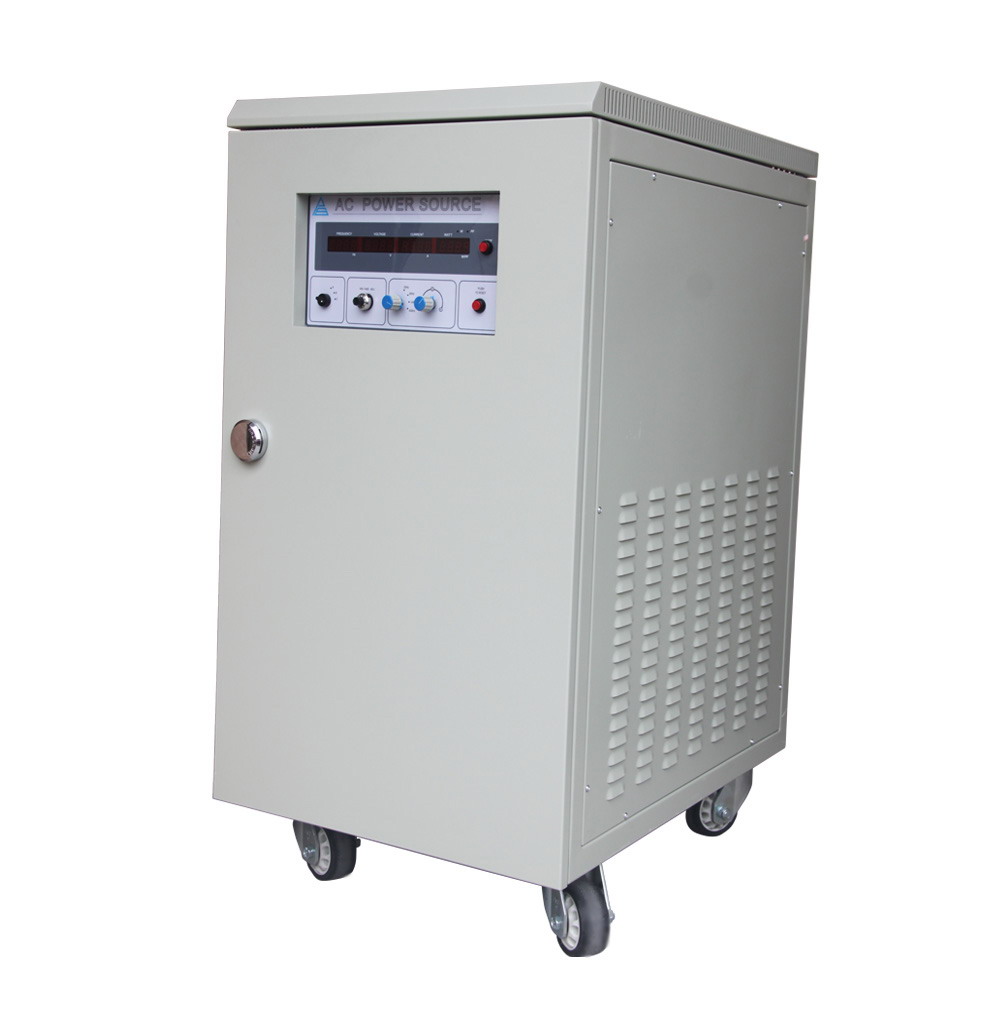
Optimizing HVAC Systems: The Role of Frequency Inverters
Click: 1857 Date: 09/14/2023 11::21::21 AM
Optimizing HVAC Systems: The Role of Frequency InvertersThe role of frequency inverters, also known as variable frequency drives (VFDs), in optimizing Heating, Ventilation, and Air Conditioning (HVAC) systems is significant. These devices adjust the speed of an electric motor by changing the frequency of the electrical power supplied to it. This ability to vary the speed of HVAC components like fans and pumps can lead to substantial energy savings and improved comfort control.Frequency inverters are particularly useful in HVAC systems because they allow for precise control of temperature, humidity, and airflow, which are critical for maintaining a comfortable and healthy indoor environment. They achieve this by continuously adjusting the speed of HVAC components to match the exact demand at any given moment. This means the system only uses as much energy as necessary, leading to increased efficiency and reduced energy costs.In addition, frequency inverters can contribute to the development of more advanced HVAC systems. For instance, the integration of inverter technology has enabled the development of cold climate heat pumps, which can operate efficiently even in subfreezing outdoor temperatures. Similarly, inverters can support the implementation of Artificial Intelligence (AI) in HVAC systems, enabling further optimization through advanced control strategies.AI can use data from various sensors to make decisions about how to control the HVAC system for optimal energy efficiency and comfort. For example, it might adjust the operation of the HVAC system based on factors like the current indoor temperature, the number of people in the building, and the time of day. In this way, AI can ensure that the system is always operating at its most efficient point, further enhancing the benefits of frequency inverters.However, implementing frequency inverters and AI in HVAC systems is not without challenges. For example, there may be concerns about potential interruptions to service in sensitive environments like hospitals. Additionally, there could be uncertainty about the expected energy savings and the cost of implementation. These challenges can be addressed through careful planning, testing, and stakeholder engagement.In conclusion, frequency inverters play a crucial role in optimizing HVAC systems, enabling significant energy savings and improved comfort control. When combined with advanced technologies like AI, they can contribute to the development of highly efficient and intelligent HVAC systems that meet the needs of today's buildings.
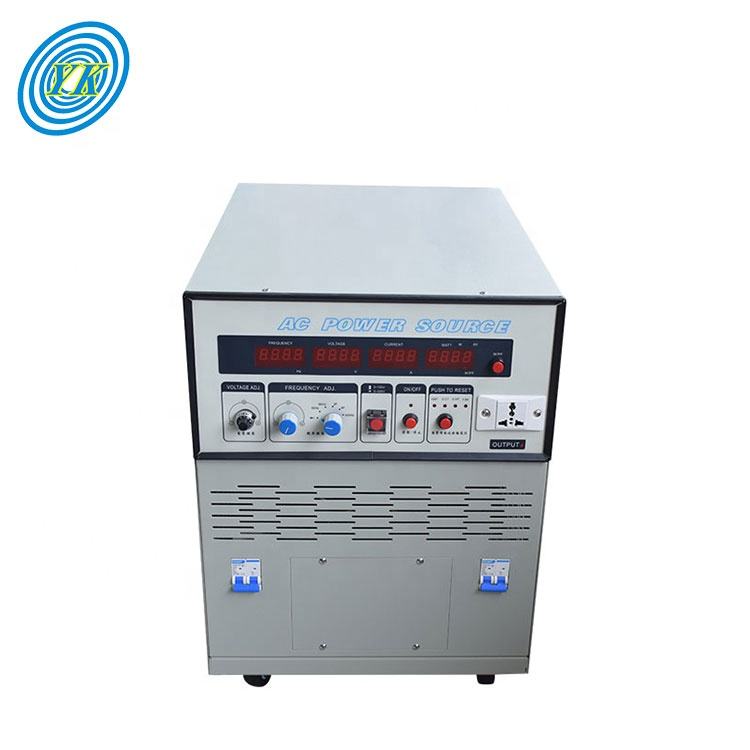
Exploring the Role of Frequency Inverters in Renewable Energy Systems
Click: 1898 Date: 09/14/2023 10::38::27 AM
Exploring the Role of Frequency Inverters in Renewable Energy SystemsFrequency inverters, also known as variable frequency drives (VFDs), play an indispensable role in renewable energy systems. This is particularly true in the context of wind and solar energy generation, where they are used to convert and regulate the energy produced.Frequency Inverters in Wind Energy SystemsIn wind energy systems, frequency inverters are used to convert the variable frequency AC power generated by wind turbines into a fixed frequency that can be fed into the power grid. They also help to optimize the power output of the wind turbine by continuously adjusting its rotational speed in response to changing wind speeds.Frequency Inverters in Solar Energy SystemsIn solar energy systems, frequency inverters play a similar role. They convert the DC power generated by solar panels into AC power that can be used in homes and businesses or fed into the power grid. Some frequency inverters also incorporate maximum power point tracking (MPPT) technology, which ensures that the solar panels are always operating at their maximum efficiency.ConclusionIn conclusion, frequency inverters play a crucial role in renewable energy systems, helping to convert and regulate the energy produced by wind turbines and solar panels. As the world continues to move towards more sustainable forms of energy, the importance of frequency inverters in renewable energy systems is only set to increase.
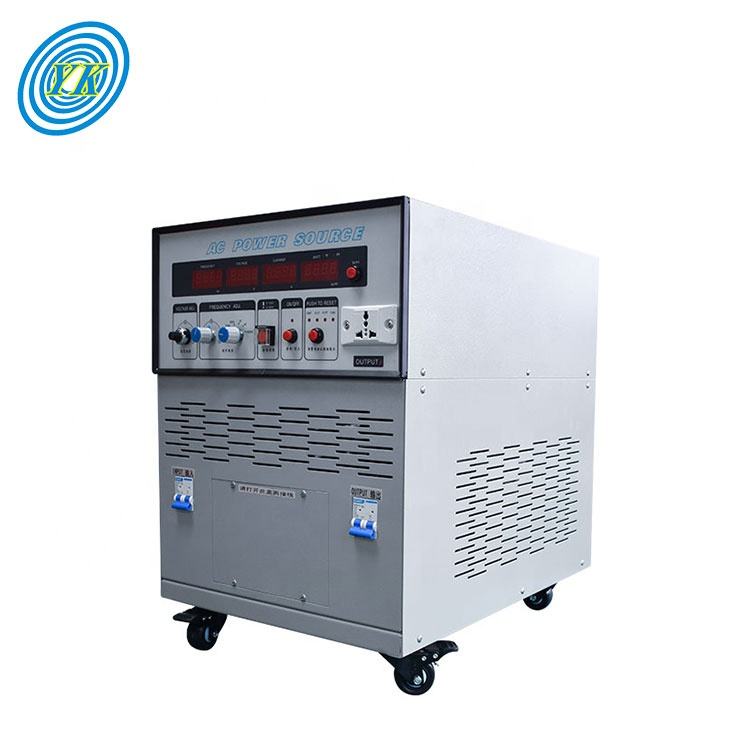
Innovative Applications of Variable Frequency Drives in the Automotive Industry
Click: 1810 Date: 09/14/2023 10::21::24 AM
Innovative Applications of Variable Frequency Drives in the Automotive IndustryVariable Frequency Drives (VFDs) or Inverter drives have revolutionized the way we control the speed of electric motors. They have been used in various industries, including the automotive industry, to bring about substantial energy savings and operational efficiencies. This article discusses the innovative applications of VFDs in the automotive industry.Enhanced Power ControlOne of the key applications of VFDs in the automotive industry is enhanced power control. A VFD controls the speed and torque of an electric motor by varying the frequency and voltage of its power supply. This allows for precise control of motor speed and torque, which is crucial in automotive applications where precise control of motor power is required for various operations such as engine control, transmission control, and braking systems. The ability of VFDs to provide adjustable speed control with standard NEMA B design squirrel cage motors makes them ideal for use in the automotive industry.Energy EfficiencyVFDs have also been instrumental in improving the energy efficiency of automotive manufacturing processes. They have been consistently improving system reliability and performance for the past 40 years and will continue to impact industrial growth during the assessment period. The VFD market is poised to grow at a value Compound Annual Growth Rate (CAGR) exceeding 5% through 2031.Electric VehiclesThe rise of electric vehicles (EVs) has created a new avenue for the application of VFDs. In EVs, VFDs are used to control the speed and torque of the electric motor, which drives the vehicle. This allows for precise control of the vehicle's speed and acceleration, leading to improved performance and efficiency. Furthermore, VFDs are used in the regenerative braking systems of EVs, where they convert the kinetic energy produced during braking into electrical energy, which can be stored and used later, thereby improving the energy efficiency of the vehicle.Manufacturing ProcessesIn the manufacturing processes of the automotive industry, VFDs are used to control the speed of various machines and equipment. This allows for precise control of the manufacturing process, leading to improved product quality and reduced waste. For instance, VFDs are used in the control of conveyor belts, where they allow for precise control of the belt speed, thereby ensuring that the products are moved through the manufacturing process at the optimal speed.Future OutlookThe future of VFDs in the automotive industry looks promising. With the increasing focus on energy efficiency and the rise of electric vehicles, the demand for VFDs in the automotive industry is expected to grow. Moreover, advancements in power electronics technology are expected to further improve the performance of VFDs, helping conserve energy and improve the efficiency of automotive manufacturing processes.In conclusion, VFDs have brought about significant improvements in the automotive industry, and their innovative applications continue to drive the industry forward. Whether it's enhancing power control, improving energy efficiency, or controlling manufacturing processes, VFDs have proven to be a vital component of the automotive industry.
